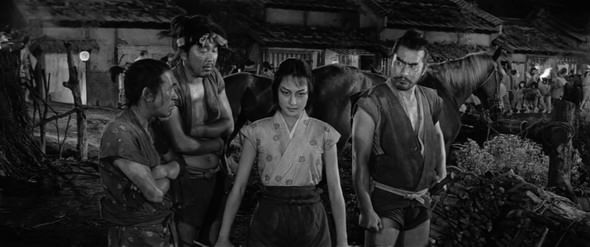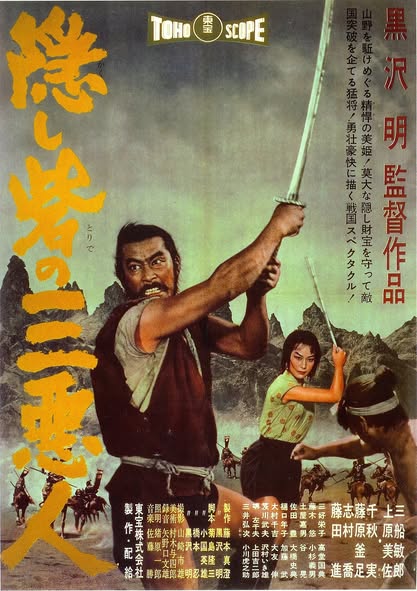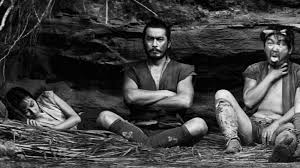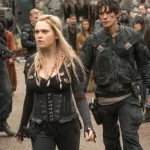The Hidden Fortress (1958)

“The Hidden Fortress,” directed by Akira Kurosawa and released in 1958, is a landmark film that blends adventure, comedy, and drama within a historical context. The story is set in feudal Japan and follows two peasants, Tahei (Minoru Chiaki) and Matashichi (Kamatari Fujiwara), who stumble upon a hidden plot involving a princess and her general.
The film begins with the two peasants struggling to survive after a war, only to discover that they can earn money by helping the general, Rokurota (Toshiro Mifune), escort the princess, Yuki (Misa Uehara), to safety. The narrative cleverly unfolds through the perspectives of the peasants, providing a mix of humor and adventure as they navigate their way through treacherous terrain and evade enemy forces.

Kurosawa’s direction is notable for its innovative storytelling techniques and visual style. The film utilizes deep focus cinematography, dynamic framing, and sweeping landscapes to create a rich cinematic experience. The use of wide shots and detailed composition enhances the epic scope of the story, immersing the audience in the political intrigue and the personal journeys of the characters.

“The Hidden Fortress” is also significant for its exploration of themes such as loyalty, honor, and the struggle for power. The dynamic between the characters, particularly the contrasting personalities of the peasants and the noble figures, adds depth to the narrative. The film’s humor serves to balance the more serious elements, making it accessible to a broad audience.

The film’s influence extends beyond Japan; it is widely regarded as one of the inspirations for George Lucas’s “Star Wars.” The elements of a quest, the use of a droid-like character (the peasants), and the overarching theme of good versus evil resonate throughout both works.
In conclusion, “The Hidden Fortress” is a masterful blend of adventure and humor, showcasing Kurosawa’s storytelling prowess and visual artistry. Its enduring legacy and influence on cinema highlight its significance as a classic in world film history, offering a compelling narrative that continues to captivate audiences today.











